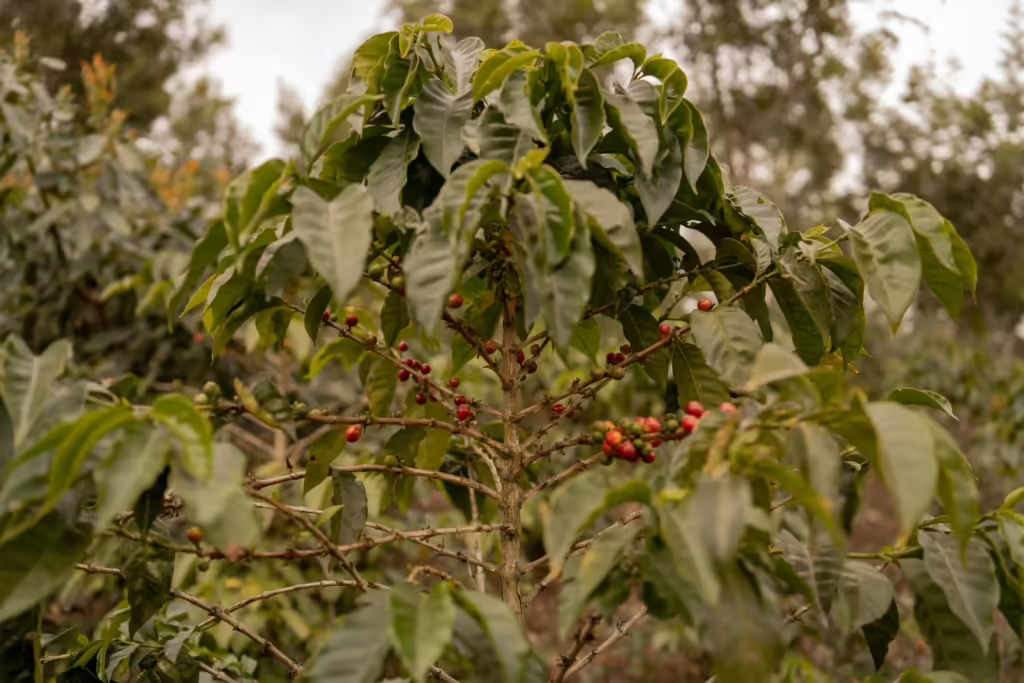
Coffee is more than just a morning beverage—it’s a reflection of the environment in which it was grown. While many factors influence the flavor of coffee beans, altitude and climate are two of the most important. These environmental elements shape everything from the sweetness and acidity to the body and complexity of your coffee. Understanding how altitude and climate impact your coffee can give you a deeper appreciation for the unique characteristics of different beans. Let’s explore how these factors influence the flavors in your cup.
The Role of Altitude in Coffee Growing
Altitude plays a significant role in determining the flavor profile of coffee beans. Generally, coffee grown at higher elevations tends to produce more complex and desirable flavors. But why is that?
1. Cooler Temperatures at Higher Altitudes
At higher altitudes, temperatures are cooler, which slows the growth and ripening of coffee cherries. This slower maturation process allows the coffee beans to develop more sugars and nutrients, resulting in a sweeter, more flavorful bean. The longer growing cycle at high altitudes also contributes to a more complex flavor profile, as the beans have more time to absorb the unique qualities of their environment.
2. Increased Acidity
High-altitude coffee is known for its bright, vibrant acidity. Acidity in coffee is not a negative characteristic—in fact, it’s highly desirable for many coffee drinkers. Acidity provides a lively, crisp sensation on the palate and can bring out flavors such as citrus, berry, and apple. Coffee grown at altitudes above 1,200 meters (about 4,000 feet) tends to have higher acidity levels, giving it a refreshing and clean taste.
3. Dense Coffee Beans
The cooler temperatures at higher altitudes cause the coffee cherries to grow more slowly, which results in denser beans. These denser beans are often considered higher quality, as they contain more concentrated flavors. When roasted, high-altitude beans tend to produce a more even, consistent roast, which further enhances their complex taste.
4. Altitude Flavor Profiles
Here are some general guidelines on how altitude affects the flavor of coffee:
- Low Altitude (Below 900 meters / 3,000 feet): Coffee grown at lower altitudes tends to have a milder, less acidic flavor. These beans often produce a fuller-bodied coffee with earthy, nutty, or chocolatey notes.
- Medium Altitude (900–1,200 meters / 3,000–4,000 feet): Coffees grown at this altitude offer a balance between body and acidity. They often have more complex flavor profiles, with hints of fruit, spice, or sweetness.
- High Altitude (Above 1,200 meters / 4,000 feet): High-altitude coffee is prized for its bright acidity, intricate flavors, and lighter body. Expect to find fruity, floral, and citrusy notes in these beans, along with a clean, crisp finish.
Famous High-Altitude Coffee Regions
- Ethiopia (1,500–2,200 meters): Ethiopian coffee is known for its floral, fruity flavors and bright acidity, much of which can be attributed to the high altitudes where it’s grown.
- Colombia (1,200–2,000 meters): Colombian coffee is often praised for its well-balanced acidity, medium body, and caramel or nutty flavors.
- Guatemala (1,500–1,800 meters): The high-altitude regions of Guatemala produce coffee with bold, complex flavors, often featuring chocolate, spice, and fruity notes.
The Impact of Climate on Coffee Beans
While altitude is crucial, climate also plays a significant role in shaping the flavor of coffee beans. Factors such as temperature, rainfall, and humidity affect how coffee plants grow, which in turn influences the taste of the beans.
1. Temperature and Bean Quality
Coffee plants thrive in tropical climates, but the specific temperature range can greatly impact the beans’ development. Coffee grows best in temperatures between 60–70°F (15–24°C). Consistent temperatures allow for even growth and help maintain the balance of flavors in the coffee cherries.
Extreme heat can cause the cherries to ripen too quickly, leading to lower-quality beans that lack complexity. On the other hand, cooler temperatures at higher altitudes allow for slow, even maturation, producing beans with greater sweetness, acidity, and complexity.
2. Rainfall and Irrigation
Coffee plants need a steady supply of water to grow, but the timing and amount of rainfall are crucial. In regions with distinct wet and dry seasons, the dry season allows the coffee cherries to ripen slowly, concentrating their sugars and flavors. If the cherries receive too much water close to harvest, they can swell and dilute the beans’ flavor, resulting in a less intense cup.
Regions with ideal coffee-growing climates have well-timed rainfall patterns that allow for a perfect balance of water and sun. This balance leads to higher-quality beans with more pronounced flavors.
3. Humidity and Drying Process
High humidity can be a double-edged sword in coffee production. While it’s important for the growth of coffee plants, excessive humidity can cause problems during the drying process after the coffee cherries are harvested. Proper drying is essential to developing the beans’ flavor. If the beans are not dried correctly, they can develop mold or ferment, resulting in off-flavors.
In regions with high humidity, careful attention is given to the drying process, often using raised beds or mechanical dryers to ensure the beans are dried evenly. A well-managed drying process helps preserve the beans’ natural flavors and prevents unwanted bitterness or sourness.
Climate Flavor Profiles
Different climates yield different flavor characteristics in coffee:
- Tropical Rainforest Climates: Coffees grown in warm, humid environments, like parts of Brazil and Indonesia, often have earthy, full-bodied flavors with lower acidity.
- Mountainous Tropical Climates: Coffee grown in high-altitude, cool climates like Ethiopia and Colombia tends to be more acidic, with fruity, floral, or citrusy flavors.
- Dry Tropical Climates: In regions with a distinct dry season, such as parts of Kenya, the slower ripening process results in beans with bright acidity and fruity or wine-like characteristics.
How Altitude and Climate Work Together
Both altitude and climate work hand-in-hand to create the final flavor profile of coffee beans. For example, coffee grown at high altitudes in Ethiopia benefits from the cooler temperatures and slower ripening process, which, combined with the region’s unique climate, produces beans with distinct fruity and floral notes.
In contrast, coffee grown in lowland tropical areas like Brazil, where temperatures are higher and the climate is more humid, tends to have a fuller body and lower acidity. These coffees often feature more earthy or chocolatey flavors.
Conclusion
The next time you sip on a cup of coffee, take a moment to think about where it came from. The altitude and climate of the coffee’s origin play a huge role in shaping its flavor, making each region’s coffee beans unique. Whether you enjoy the bright acidity of high-altitude beans or the full-bodied richness of low-altitude varieties, understanding how these environmental factors influence your coffee can enhance your appreciation for the drink.
By exploring different altitudes and climates, you can find a coffee that perfectly matches your taste preferences—whether it’s a fruity Ethiopian, a nutty Colombian, or a chocolatey Brazilian.




